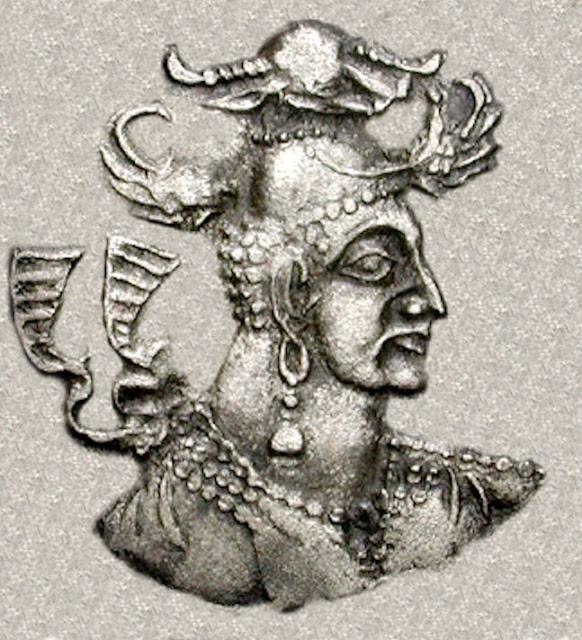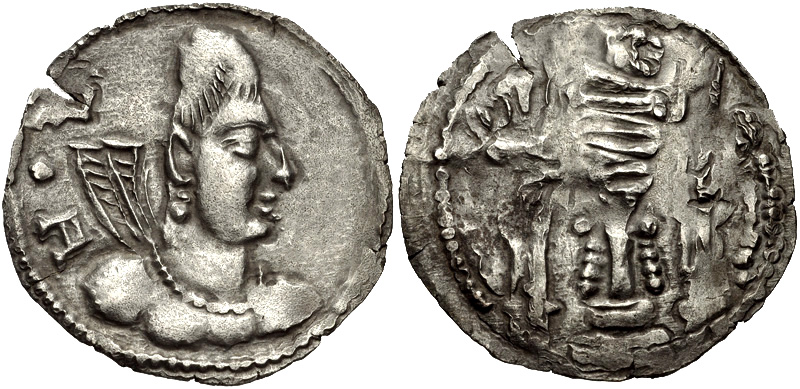Azes (Scythian) coin in India, with Demeter and Hermes, 1st century BCE
"Azes I (Greek: Ἄζης Azēs, epigraphically ΑΖΟΥ Azou; Kharosthi: 𐨀𐨩 A-ya, Aya; both from Saka *Aza, meaning "leader".) was an Indo-Scythian ruler who ruled around c. 48/47 BCE – 25 BCE and completed the domination of the Scythians in northwestern India.
Maues and his successors had conquered the areas of Gandhara, as well as the area of Mathura from 85 BCE forming the Northern Satraps.
Azes's most lasting legacy was the foundation of the Azes era. It was widely believed that the era was begun by Azes's successors by simply continuing the counting of his regnal years. However, Prof. Harry Falk has recently presented an inscription at several conferences which dates to Azes's reign, and suggests that the era may have been begun by Azes himself. Most popular historians date the start of the Azes era to 58 BC and believe it is the same as the later era known as the Malwa or Vikrama era.
However, a recently discovered inscription, the Bajaur reliquary inscription, dated in both the Azes and the Greek era suggests that actually this is not the case. The inscription gives the relationship Azes = Greek + 128. It is believed that the Greek era may have begun in 173 BCE, exactly 300 years before the first year of the Era of Kanishka. If that is the case then the Azes era would begin in about 45 BC."
-taken from wikipedia
 |
| Azes (Scythian) coin in India, with Demeter and Hermes, 1st century BCE (Whitehead Coins of the Punjab Museum). |
 |
| Description from Catalogue of coins in the Punjab museum, Lahore by Lahore Museum; Whitehead, R. B. (Richard Bertram). Text source below in archive link. Page 118/286. |
 |
| Image from the book (page 258/286) |
Source:
https://archive.org/details/catalogueofcoins01lahoiala/page/118/mode/2up
Quote:


Comments
Post a Comment